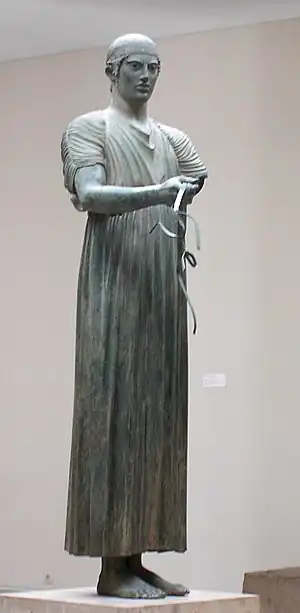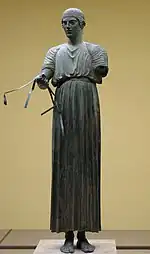Charioteer of Delphi
The Charioteer of Delphi is a Greek bronze sculpture from the early Classical period, about 477 BC. It stands 1.8 m tall.

Charioteer of Delphi
It was discovered in the sanctuary of Apollo at Delphi during excavations by French archaeologists in 1896. With the statue were found fragments of a sculpted chariot, sculpted horses, and a small, sculpted person, presumably the charioteer's groom. All would have been part of a large monument. The charioteer monument was commissioned by Polyzalos, a Sicilian tyrant, to commemorate his victory in the chariot races about 477 BC. At some point, according to Greek practice, the statue was buried, probably because of irreparable damage.
Gallery
 Charioteer
Charioteer Charioteer
Charioteer
References
- Houser, Caroline (1983), Greek Monumental Bronze Sculpture, Vendome Press, pp. 21–22
This article is issued from Wikipedia. The text is licensed under Creative Commons - Attribution - Sharealike. Additional terms may apply for the media files.
